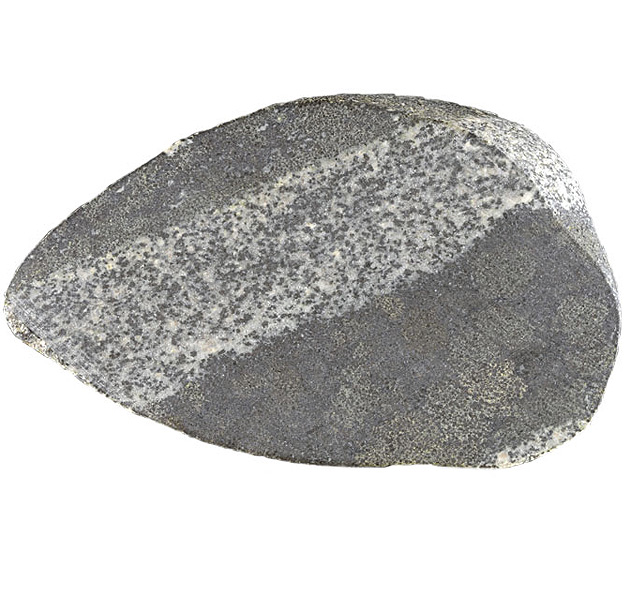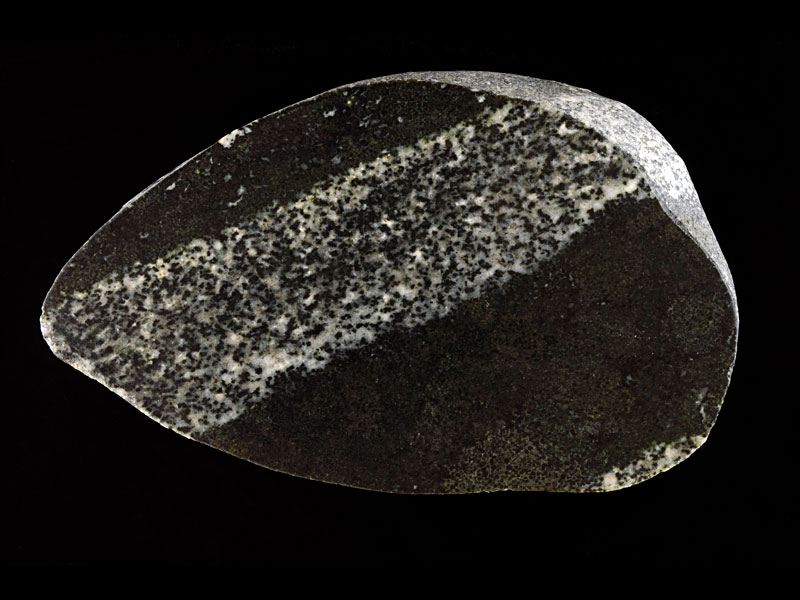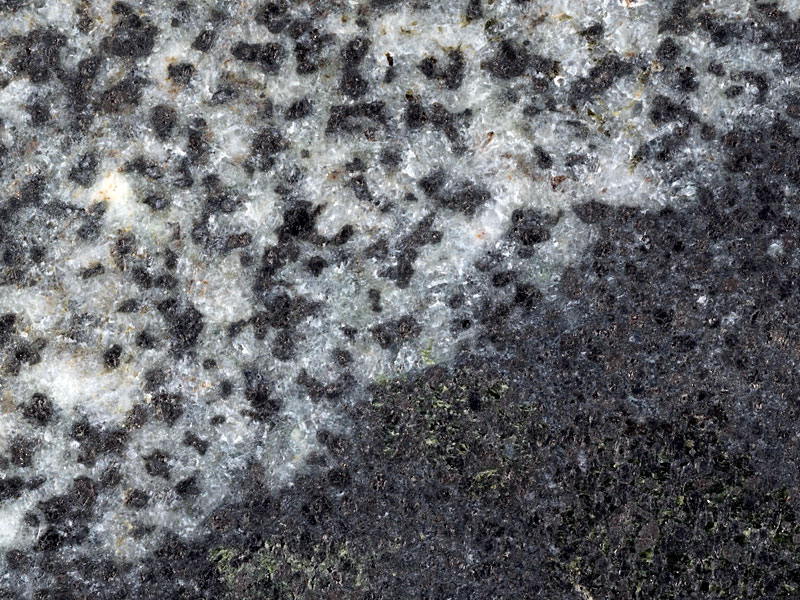
Fact sheet
This sample of gabbro comes from Loch Uisg on the Isle of Mull, Scotland. It is part of an eroded magma chamber beneath a Paleogene volcano that formed synchronously with basalt lavas on the island. As the volcano magma chamber cooled it formed layering, reflecting processes going on in the chamber that included settling of different mineral phases, influx of fresh magma into the bottom of the chamber, and changing composition of the remaining liquid.
The thin section contains layers rich in olivine and others rich in plagioclase, reflecting the settling and composition changes on short length scales. In this section, the olivine layers appear to display structures with the appearance of sedimentary grading, forming almost 100 per cent of the layer at one point just above a layer of smaller chromite grains (a denser and thus more rapidly settling mineral phase). Plagioclase also forms a cumulate phase intergrown with olivine. Pyroxene is less common and appears to have grown late in the crystallisation sequence, filling spaces remaining between olivine grains.
The United Kingdom Virtual Microscope (UKVM) collection consists of igneous, sedimentary and metamorphic rocks from around the UK.
It is intended as a teaching resource, helping to tell the story of the common rock types and how they form, and reflecting the history of the UK at the margins of the continent of Europe. The collection is a series of teaching sets, for example igneous rocks from the North Atlantic Igneous Province and SW England; high-temperature metamorphic rocks from Scotland and low-temperature metamorphic rocks from Wales; and sedimentary rocks, including English limestones and sandstones.







